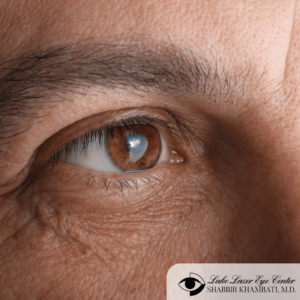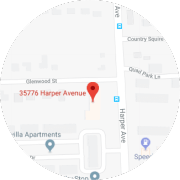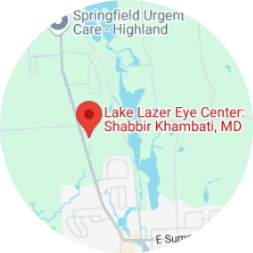
Our vision is arguably our most precious sense, allowing us to navigate the world, connect with loved ones and experience life’s beauty. But what happens when vision changes? When should you be concerned?
While occasional fluctuations are normal, some eye symptoms can signal underlying eye health problems. March is Save Your Vision Month, a crucial time to raise awareness about these issues and encourage proactive eye care. With those goals in mind, here are 10 vision symptoms you shouldn’t ignore:
- Blurry or cloudy vision
This is a common symptom of many conditions, including nearsightedness, farsightedness, astigmatism, cataracts, diabetic retinopathy and macular degeneration. However, sudden blurriness, especially in one eye, could indicate a more serious issue like a detached retina. - Flashes of light or floaters
Seeing flashes of light or noticing new floaters (specks or cobwebs drifting in your vision) could be harmless, but they can also be signs of a retinal tear, detachment or vitreous detachment in which the gel inside the eye pulls away from the retina. Seek immediate medical attention if floaters appear suddenly or are accompanied by vision loss. - Double vision
Double vision can occur in one or both eyes and signifies misalignment of the eyes. It can be caused by several factors, including neurological issues, muscle weakness, thyroid problems or stroke. - Eye pain or redness
This often indicates inflammation or irritation. Common causes include dry eyes, allergies, styes or pink eye. Pain accompanied by blurred vision, light sensitivity or sudden vision loss requires immediate medical attention. - Difficulty seeing at night
Difficulty adapting to darkness might be a sign of night blindness, which can be caused by vitamin A deficiency, certain medications or eye diseases like retinitis pigmentosa. - Sensitivity to light
While some light sensitivity is normal, excessive discomfort can indicate conditions like photophobia, migraine headaches or keratitis. - Eyelid changes
Droopy eyelids (ptosis) can obstruct vision and might be caused by neurological issues, muscle weakness or natural aging. However, noticeable changes in eyelid appearance, like bumps, crusting or redness, could signify infection or other disorders. - Headaches
Frequent headaches associated with eye strain can indicate uncorrected vision problems or poor screen ergonomics. If headaches worsen with close-up work or are accompanied by other vision changes, an eye exam is necessary. - Changes in pupil size
Unequal pupil size (anisocoria) can be harmless, but it can also be a sign of serious neurological conditions, trauma or eye diseases. Sudden changes in pupil size warrant immediate medical attention. - Loss of peripheral vision
Gradual peripheral vision loss might be an age-related change, but rapid loss could indicate glaucoma, retinal detachment or other serious conditions.
Keep in mind this list is not exhaustive, and many other symptoms could signal eye problems. Early diagnosis and treatment can significantly improve your chances of preserving your vision. If you experience any of these symptoms, immediately consult an eye doctor, such as the Detroit LASIK specialists at Lake Lazer Eye Center.
By prioritizing eye care and staying informed about potential problems, you can take proactive steps towards safeguarding your vision. Remember, your eyes are precious; treat them with care!
Lake Lazer Eye Center offers Detroit LASIK patients up-front pricing, and convenient and affordable payment plans for SoftTouch LASIK and the SMILE procedure. Dr. Khambati has helped thousands of people from all over the world escape the restrictions of glasses and contacts through laser vision correction. Detroit patients who are not candidates for vision correction can get our assistance with a contact lens evaluation or a selection of designer and specialty eyewear.

 586-792-3891
586-792-3891 



